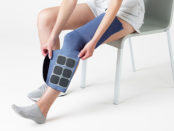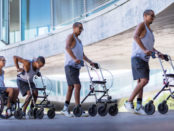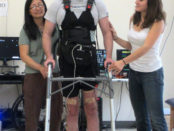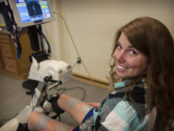NMES
Neuromuscular electrical stimulation
For those with walking difficulties arising from neurological conditions such as multiple sclerosis, Parkinson’s and cerebral palsy — augmenting mobility in a manner that seamlessly blends with the human body has always been
… READ MORECionic Neural Sleeve promises groundbreaking and innovative healthcare product for people who live with cerebral palsy, multiple sclerosis, stroke recovery, spinal cord injuries, or other neuromuscular diagnoses. CIONIC CIONIC Blog
… READ MORECombined with other recent studies, new evidence points to electrical stimulation as a promising treatment for paralysis. David, 28, who suffered a spinal cord injury, can walk (with a walker) for more than 1 kilometer with electrical
… READ MORE“This study documented that patients were not only able to maintain, but to increase activity following surgery. Since subjective scores, such as the OKS and the VAS for pain, improved significantly over preoperative [measures] and
… READ MOREAggressive rehabilitation after total knee arthroplasty is safe and could lead to earlier functional recovery without compromising range of motion, new research shows. 5 tips for faster knee surgery recovery. Spring Loaded Technology
… READ MOREAmerican man, 26, completes 3.5-metre course thanks to computer system that reroutes signals from his brain to electrodes on his knees. Fig. 1. Partial picture of the overground walking course, depicting the BCI-Parastep system, the
… READ MOREParalyzed men move legs with new non-invasive spinal cord stimulation. Five men with complete motor paralysis were able to voluntarily generate step-like movements thanks to a new strategy that non-invasively delivers electrical
… READ MOREFunctional electrical stimulation bike in Faculty of Kinesiology’s Thrive Centre available for public use. Amanda Timm, 21, is now able to cycle again using the FES bicycle at her school, the University of Calgary. Jennifer
… READ MOREOsteoarthritis, OA affects approximately one in 10 individuals and is equally prevalent in men and women, although there is higher prevalence in postmenopausal and obese women. Knee OA’s high prevalence is directly associated with a
… READ MORE








